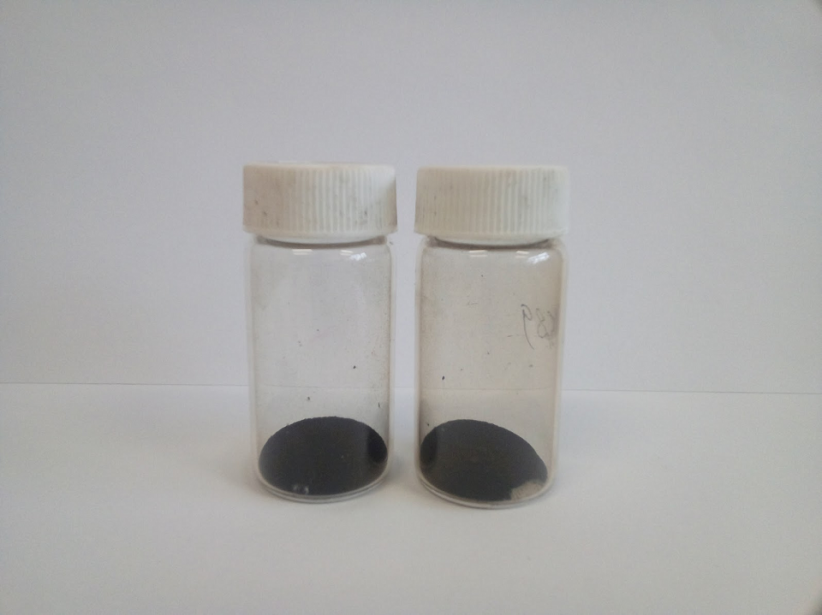Researchers at WUT are working on an innovative filter material
The current crisis related to the COVID-19 pandemic brought the researchers’ attention to the need of creating hybrid fibre filters, which can be utilised in air-conditioning or ventilating systems in buildings, in particular in hospitals and other health centres. At the moment, a research team at WUT is working on this kind of solution. The project implementation is funded by the research grant Technologie Materiałowe-1.
“Our objective is to produce an air-filtering hybrid fibre material, displaying both the filtering efficiency and strong biocidal properties in the visible light spectrum,” explains Katarzyna Jabłczyńska, D.Sc., from the Faculty of Chemical and Process Engineering at WUT. “When we began implementing the project, we assumed creating a structure from polypropylene fibres with a few inches in diameter and a surface covered with suitably designed nanoparticles of a photocatalyst, which will neutralise bacteria and other microorganisms deposited in the filter structure.”
Motivation to act
Keeping high microbiological cleanliness of air plays a crucial part in protecting the health of medical staff and in protecting the patients against secondary infections, and it is maintained only if the air-conditioning and ventilation systems work efficiently.
"Nowadays bactericidal lamps emitting UV-C radiation are used to disinfect the air in operating theatres, among other things," explains Jabłczyńska. "Unfortunately, those lamps generate a certain amount of ozone, which has a detrimental effect on human health. On the other hand, with a certain level of humidity and temperatures, a porous filtering material, despite its effectiveness in emitting bioaerosol particles, may itself become an ideal spot for the development and become a source of pathogens like bacteria and mould spores, which are a potential health hazard. We had to find new and better solutions which would enable us to maintain high air cleanliness," she says.
And that is what happened. Based on the literature about the bactericidal properties of copper oxide (CuO) and silver (Ag), WUT researchers proposed a modification of fibres with composite Ag/CuO nanoparticles produced during flame synthesis, which involves burning drops of a liquid precursor in the reactor flame. This way a metallic precursor becomes oxidised and the resulting product creates permanent, crystalline particles through sporification and growth during the gas phase.
Jabłczyńska explains, "Research shows that both silver and copper have great antibacterial and antiviral properties, and owing to its photocatalytic properties, Ag/CuO hybrid structures additionally generate highly reactive radicals and enforce the effect of pathogen elimination."
International cooperation
Katarzyna Jabłczyńska, D.Sc., from the Faculty of Chemical and Process Engineering spent a month in Switzerland at the Federal University of Technology in Zurich (ETH Zürich), as part of the implementation of the research grant, to gain practical knowledge about the production of particles during flame processes and to familiarise herself with the operation and maintenance of a flame reactor. Her stay in Zurich was the first step towards the transfer of the technology of flame synthesis to the Warsaw University of Technology.
"During the flame synthesis of composite nanoparticles of Ag/CuO carried out at ETH Zürich, we managed to select the proper concentration of the precursor and process parameters of the synthesis of CuO particles, conduct a synthesis of nanoparticles with different silver content and characterise the produced particles in terms of the size of powder grains, the size of crystallites, the phase composition, and optical properties," lists Jabłczyńska.
The course of research
The first experiments involved a synthesis of copper oxide particles from the precursor in a form of copper neodecanoate (II) using flame spray pyrolysis (FSP), in which the sprayed precursor is dissolved in a flammable solvent whose burning generates the energy necessary in the process.
Nanoparticles produced this way take the form of a dark brown powder. X-ray diffraction (XRD) was used to characterise the crystalline structure and the proper surface was determined by the measurement of BET isotherm during the adsorption of nitrogen.
After initial syntheses of copper oxide, two sets of process parameters were chosen, which were used in the production of nanoparticles of copper oxide and silver. The synthesis produced two series of composite particles of a size of a dozen nanometres (open flame synthesis) and over thirty nanometres (closed flame synthesis in a quartz pipe 40-cm long) with the silver content amounting to 0.1%, 1%, 5%, 10%, and 25%.
Promising findings
Research findings look very promising. Jabłczyńska says, "The tested Ag/CuO composite particles with a 40-nm diameter and 25% silver content display much better bacteriostatic properties than the particles of pure copper oxide, and only slightly worse than those in the particles of pure silver." She adds, "It is particularly interesting that in the case of gram-negative bacteria, the minimum concentration hindering the growth of microorganisms in the nanoparticles researched in the project amounts to 20 mg/L. This means that as compared to silver, composite particles produced in FSP are twice as effective in hindering the spread of bacteria as pure silver, whose concentration fluctuates between 10 - 13 mg/L ."
The project "Nonwoven - photocatalytic nanoparticles composite structures for an effective filtration of microbiologically contaminated air is implemented as part of the competition for research grants Technologie Materiałowe-1.
Research team:
Katarzyna Jabłczyńska, D.Sc.; Karol Ćwieka, D.Sc.; Kamil Czelej, D.Sc.; Łukasz Werner, M.Sc.
Source: materials provided by Katarzyna Jabłczyńska, D.Sc.


![Left: A diagram of a flame [based on L. Madler et al. / Aerosol Science 33 (2002) 369–389]. Right: A photo of a burner during the production of CuO nanoparticles in the FSP process. Copper produces a green hue in the flame. Source: materials provided Left: A diagram of a flame [based on L. Madler et al. / Aerosol Science 33 (2002) 369–389]. Right: A photo of a burner during the production of CuO nanoparticles in the FSP process. Copper produces a green hue in the flame. Source: materials provided](/var/excellence/storage/images/media/images/schemat-reaktora-plomieniowego-fot-palnika/1281-1-eng-GB/Schemat-reaktora-plomieniowego-fot-palnika.png)
